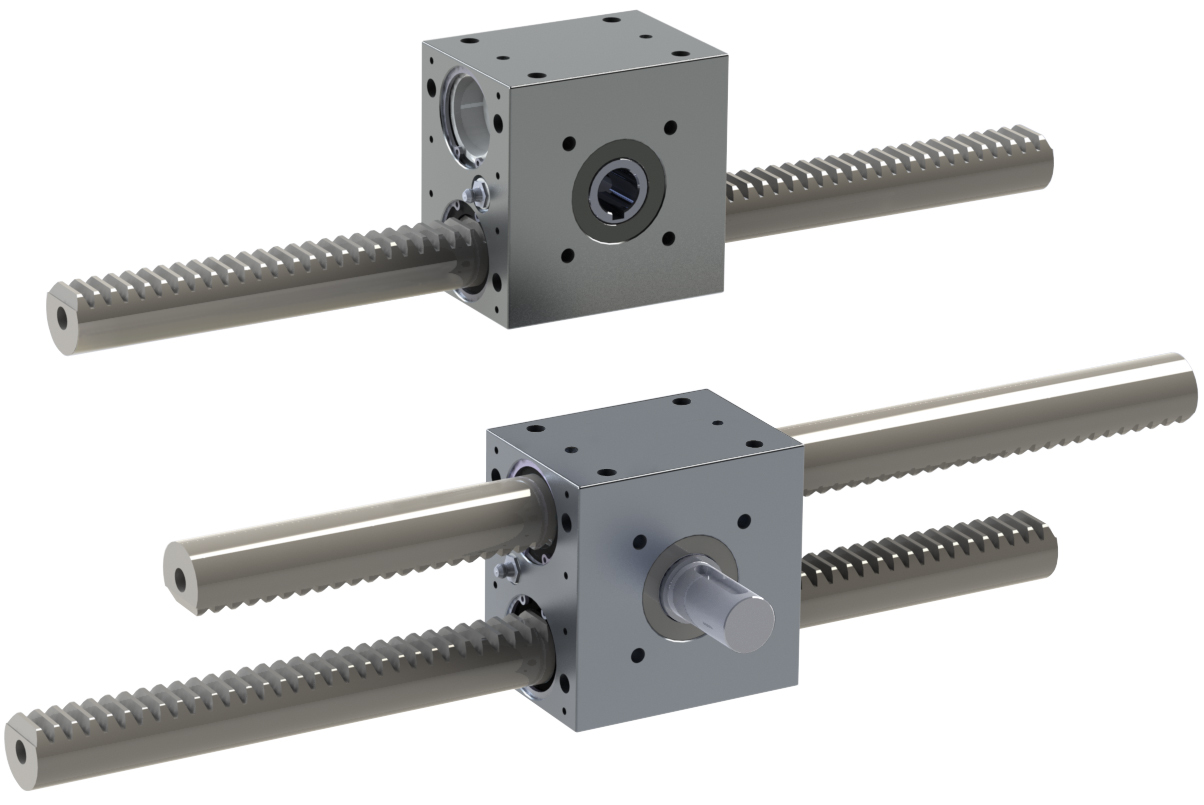
When an application calls for synchronous lifting and pushing of a heavy load, rack and pinion jacks are an easy-to-use, economical and effective option. They combine a simple structure, robust design and a wide range of lifting forces, making them highly versatile and particularly attractive for installation in tight spaces and harsh environments. In fact, rack jacks can be installed as a complete system with many configurations, connected to air cylinders and motors, to guide forces to wherever they are needed in complex applications.
For example, Redex offers a round-type rack — the centerpiece of the Rack Jack family — that may be adapted for more than 100 arrangement possibilities. The units are available with one or two racks, and the pinion comes in four different constructions. These Rack Jacks are designed with a force-locked connection between the lifters or drive components via profile shafts inside a robust, standard-size square housing. The lifters are particularly insensitive to external influences. In the double (or two-rack) version, the pinion is driven by the motor, and the racks move linearly in opposite directions. Sliding bushes at each outlet support the round racks. This overall design gives the Rack Jack units their compact size.
Many Potential Configurations
Because the Rack Jack transfers the force from the rotational movement into the linear motion and the linear motion into the rotational movement, the arrangement possibilities are endless. In addition, the one-rack version can be inserted anywhere the installer wishes. The multitude of configuration possibilities means that users can change the effective direction of the track. Here are just some of the ways these Rack Jacks can be arranged to guide forces:
- Horizontally with an air cylinder for high forces, synchronizing two air cylinders, multiple cylinders in a tight mounting space, serial synchronous movements or to move long components.
- Vertical and horizontal with an air cylinder to transfer forces from horizontal to vertical direction or vertical to horizontal, with or without a guide element. For complex lifting applications, a four-point jacking system is possible.
- Horizontal with an electric motor, in a fixed system with moving rack or a moving system with fixed rack. Two- or four-point jacking systems can be configured with or without a guide element.
- Vertical arrangement with electric motor fixed at steel columns where the rack is fixed and the system moves.
- Horizontal with double-unit and electric motors for opposing movements such as clamping and centering or opening and closing, with or without a guide element.
- Horizontal with sideways mounting for clamping and centering or opening and closing without a guide element.
- Electric motor with a connected pedestal bearing for simultaneous lifting or tilting.
- With an air cylinder for special connections and clamping.
- With linear drives and an electric motor in handling systems with movable or fixed guide rail, or one fixed and one movable rack.
- Horizontal or door opening assemblies with double unit, electric motor and linear drives as a finished system.
- Vertical or vertical lifting column assemblies with double unit, electric motor and linear drives as a finished system.
- Horizontal systems for forced synchronization without their own drive or vertical synchronization systems with or without a drive.
For applications with transverse forces, Redex can equip your system with a separate guide element.
We’ll Help You Build a Complete System
At Redex, we have both the capability and expertise to assist you in selecting an optimal Rack Jack. We can also help you arrange a complete system that will direct forces as you need them and deliver robust, reliable performance in complex applications. To get started, feel free to send an inquiry to our sales engineers.
For more information about Redex Rack Jacks, please visit our product page.
